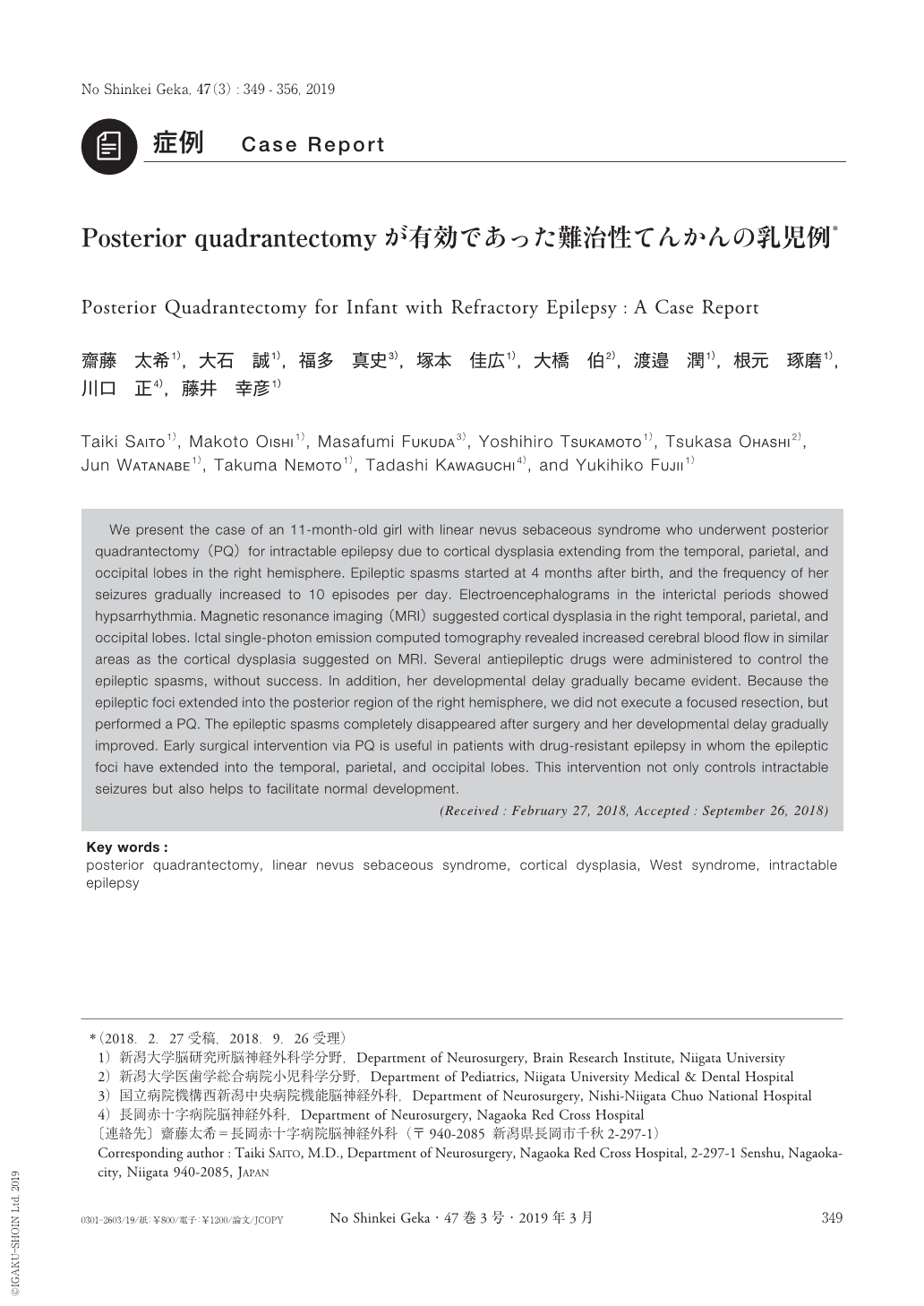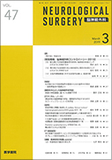Japanese
English
- 有料閲覧
- Abstract 文献概要
- 1ページ目 Look Inside
- 参考文献 Reference
Ⅰ.はじめに
側頭頭頂後頭葉離断術(posterior quadrantectomy:PQ)は,2007年にDanielらが報告1)して以降,広汎な一側の大脳半球に焦点を有する難治性てんかんに対して,機能を温存しつつ焦点を離断できるため,徐々に適応が広がってきている.
今回われわれは,右側頭葉から後頭葉にかけての皮質形成異常に起因した難治性てんかんを有する線状脂腺母斑症候群(linear nevus sebaceous syndrome:LNSS)の小児例に対し,PQを施行した1例を経験したのでこれを報告する.
We present the case of an 11-month-old girl with linear nevus sebaceous syndrome who underwent posterior quadrantectomy(PQ)for intractable epilepsy due to cortical dysplasia extending from the temporal, parietal, and occipital lobes in the right hemisphere. Epileptic spasms started at 4 months after birth, and the frequency of her seizures gradually increased to 10 episodes per day. Electroencephalograms in the interictal periods showed hypsarrhythmia. Magnetic resonance imaging(MRI)suggested cortical dysplasia in the right temporal, parietal, and occipital lobes. Ictal single-photon emission computed tomography revealed increased cerebral blood flow in similar areas as the cortical dysplasia suggested on MRI. Several antiepileptic drugs were administered to control the epileptic spasms, without success. In addition, her developmental delay gradually became evident. Because the epileptic foci extended into the posterior region of the right hemisphere, we did not execute a focused resection, but performed a PQ. The epileptic spasms completely disappeared after surgery and her developmental delay gradually improved. Early surgical intervention via PQ is useful in patients with drug-resistant epilepsy in whom the epileptic foci have extended into the temporal, parietal, and occipital lobes. This intervention not only controls intractable seizures but also helps to facilitate normal development.

Copyright © 2019, Igaku-Shoin Ltd. All rights reserved.


